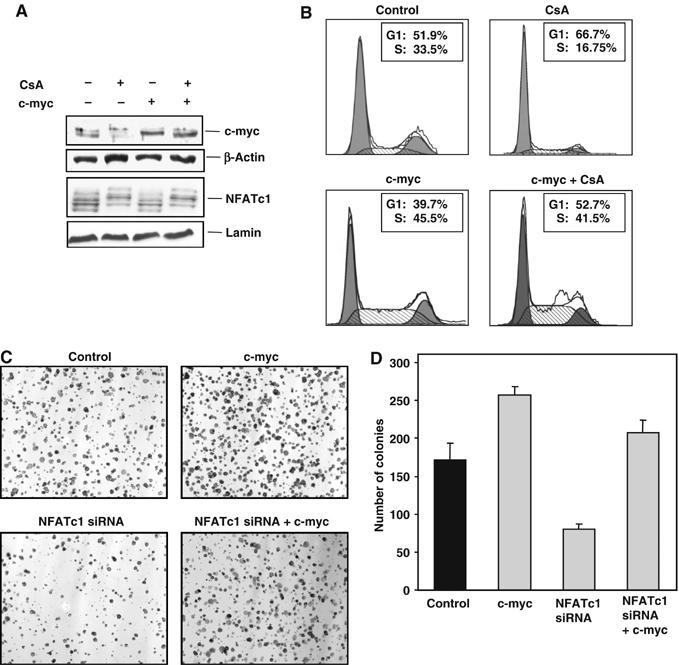Figure 5.

NFATc1-mediated growth promotion requires c-myc activation. (A) Western blot analysis demonstrating c-myc re-expression in CsA-treated Panc-1 cells. Cells were transiently transfected with a tetracycline-inducible c-myc expression construct or an empty vector control. Basal activity of the minimal promoter in the absence of tetracycline or doxycycline was sufficient to reconstitute basal c-myc expression levels in CsA-treated cells (lane 3). Analysis of nuclear extracts revealed that the inhibition of nuclear translocation of NFATc1 by CsA was not influenced by c-myc overexpression (lower panel). (B) Cell cycle analysis of cells re-expressing c-myc. CsA treatment significantly attenuated cell cycle progression in the control-transfected cells (upper panels), but had very little effect on the c-myc-transfected cells (lower panels). (C) Examples of soft agar assays demonstrating strong differences in colony formation after 10 days of incubation. Cells were left untransfected or transfected with the NFATc1-specific siRNA #2, the c-myc expression construct, or both, and the cells were seeded in soft agar 24 h post-transfection. Original magnification: × 100. (D) Statistical evaluation of soft agar assays. Reconstitution of c-myc expression completely abrogated the inhibitory effect of NFATc1 knock down on anchorage-independent growth of Panc-1 cells. Results are representative of triplicate experiments and are displayed as bars+s.d.
